The basic chassis was a development of the Uno, but
little remained unchanged. The entire structure was significantly stronger
in order to be suitable on the rougher roads found in some of the markets
for which it was intended, as was the suspension. The body was a completely
new design by the IDEA studio of Turin, who also designed the new interior.
Production began in 1996 in Brasil and was followed later that year by a plant in Argentina. 1997 saw production starting in Venezuela, Poland and Morocco whilst
Turkey started building the same car in 1998. India and South Africa began production in 1999, Egypt in 2001 and China in 2002.
The Palio has been campaigned in motorsport in many of the countries where it is produced, including circuit racing, rallycross, rallying and hill climbs. In Turkey,
for example, the Kit Car version uses a 180bhp version of the 1580cc engine, whilst the Group N version has 103bhp.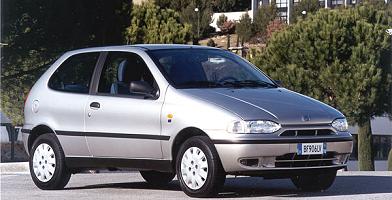 Launched in 1996 in Brasil, '178 Project' was Fiat's
first attempt to build a 'world car', the same basic design being produced in
numerous nations around the globe. Four principal models were produced, a hatchback,
saloon, pick-up and estate, different versions being built in different
countries. The powerplants, both diesel and petrol, also varied from region to region depending
on local production capability, legislation and market requirements.
Launched in 1996 in Brasil, '178 Project' was Fiat's
first attempt to build a 'world car', the same basic design being produced in
numerous nations around the globe. Four principal models were produced, a hatchback,
saloon, pick-up and estate, different versions being built in different
countries. The powerplants, both diesel and petrol, also varied from region to region depending
on local production capability, legislation and market requirements.
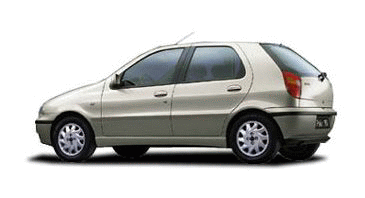 Palio
Palio
The first model to be launched, the Palio is a compact hatchback
available with either three of five doors. The design is distinctive, with the front and rear lights being very characteristic, and incorporated
much work to improve the aerodynamics, with a resulting drag coefficient of 0.33. The design brief also emphasised practicality, and the large boot with low loading edge and
folding rear seats gives the car flexibility. Safety also played a role, with crumple zones, side impact bars, airbags and ABS all featuring, depending on the version.
As with all the 178 family cars, the trim levels, specificaions and powerplants varied depending upon the market, for example in India there was
marketed a 1.2 Palio Sport including alloy wheels and spoiler.
Click here for a diagram of the Palio structure.
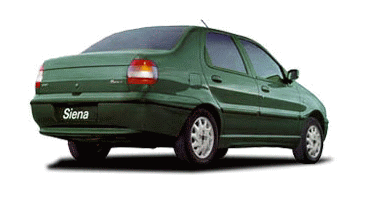 Siena
Siena
The four door saloon variant is designed to cater especially for those markets where a three-box design is desired. It is the same as the Palio four door except for the well proportioned boot grafted onto the rear of the car, the overall result being a pleasing small saloon. The rear has an unusual treatment with a horizontal swage in the boot matching the rear light clusters. Given the higher status of a saloon over a hatchback, generally (although it depends on the market) the Siena had a higher specification than the Palio.
Click here for a diagram of the Siena structure.
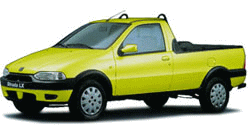 Strada
Strada
The pick-up of the range, which replaced the Fiorino pickup in some markets, the Strada is available (depending on the market)
both with a single, two-seat cab or an extended cab with a bench seat behind the front seats. A load of up to 705kg can be carried on the rear of the 2-seat version.
The front design echoes the Palio/Siena, but the Strada has a longer wheelbase (up by 358mm from the Palio), wider tracks and has been given a more robust appearance with
the use of different a bumper and plastic wheelarch extensions. The rear of the car is all new, and includes FIAT pressed into the hinged tailgate.
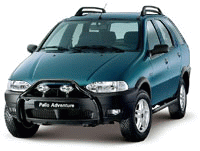 Weekend
Weekend
The estate car version again features a slightly stretched wheelbase (63mm longer than the Palio) in order to increase the
useable space inside. Otherwise the metal work is the same back as far as (and including) the rear doors. The stretch is clearly visible between the rear doors and
the rear wheelarch. Further back is the volumous rear luggage area, including a large hatch which, when opened, leaves a very low loading height, and the
split folding rear seats which enable (when all folded) up to 1540dm3 of space to be used. The rear tailgate design echoes the Siena with a horizontal
swage connecting the light clusters whilst roof bars add to the visual impact of the vehicle.
In some markets a version of the estate known as the 'Adventure' is also available. This has an 'off-road' kit which makes the car visually more aggressive, with
different bumpers, bull-bars, bars along the sills, various plastic trim and a raised ride height. In 2002 the Weekend also received a facelift (see Palio below) in certain markets.
Click here for a diagram of the Palio Weekend structure.
2001 Facelift
In 2001 the Palio received a redesigned front end incorporating new headlights, a new grille which included the now standard round Fiat badge and a new bumper. The rear was also redesigned with a new tailgate and light clusters. At the same time a raft of other improvements were introduced, including a redesigned dashboard, revised suspension, new engines, new instrumentation, improved safety etc. A claimed 80% of components were new. This revised car was first introduced in Brazil and then gradually into other plants.
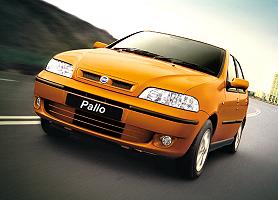 |
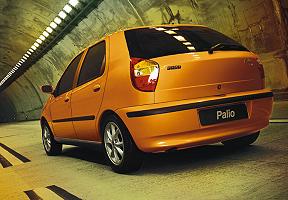 |
Albea / Petra
Released in 2002, the Albea is effectively a Siena with the same treatment as the facelifted Palio described above including a redesigned boot and rear lights. In Egypt effectively the same car is known as the Petra, released later the same year, whilst in some markets the facelifted car is still known as the Siena. It is fitted with one of two 16V engines, 1.6 and 1.2-litres, both conforming to Euro III emissions standards.
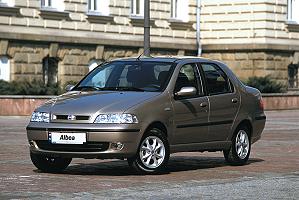 |
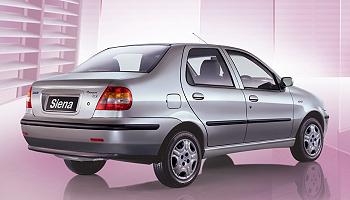 |
2003+ Facelift
In 2003 the Palio was again revised. In a similar way to the 2001 facelift, the front end was redesigned incorporating new
headlights, a new grille and a new bumper, all taking cues from the Punto design. The rear was also redesigned with a new tailgate and light clusters. Internally the dashboard and
instruments were again changed and a variety of other details throughout the car were improved.
The car was again facelifted in 2005, again with new lights, interior and detail changes.
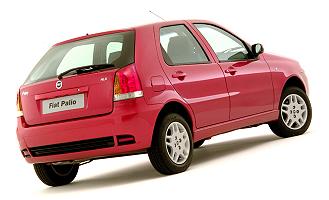 |
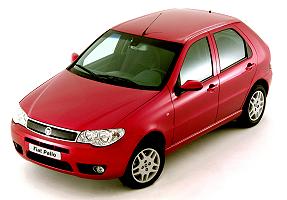 |
Technical Details
| Driveline | transverse engine at front with front wheel drive |
| Engine | 1497cc (76x82.5mm) sohc 4-cyl with 76bhp @ 5,000rpm
1580cc (86.4x67.4mm) 16V dohc 4-cyl with 106/98bhp @ 5,750/5,500rpm 1596cc dohc with 103bhp @ 5,750rpm 1242cc (70.8x78.86mm) FIRE 4-cyl with 73/60bhp @ 6,000/5,000rpm 1697cc sohc turbo diesel with 69/64/72bhp @ 4,500rpm 1910cc sohc diesel with 63bhp @ 4,500rpm |
| Suspension | front : MacPherson strut with telescopic dampers and coil springs plus anti-roll bar
rear : torsion beam axle with coil springs and telescopic dampers wheelbase : 2360mm (Strada 2718mm, Weekend 2423mm) track (front/rear) : 1386mm/1378mm (Palio) |
| Brakes | front : discs
rear : drums, discs on some versions handbrake operating on the rear via a cable dual hydraulic circuit ABS optional on some versions |
| Gearbox | 5 speed manual |
| Steering | rack and pinion
power assistance optional or standard, depending on model |
| Dimensions |
Weekend
Siena (LxWxH) : 4100mm/1626mm/1445mm Palio (LxWxH) : 3735mm/1626mm/1445mm Strada (LxWxH) : 4398mm/1665mm/1585mm |
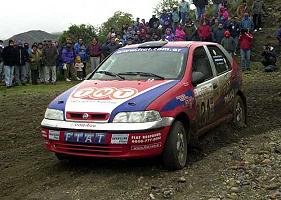 |
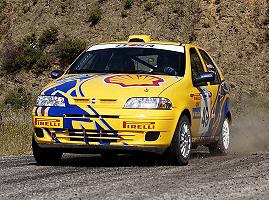 |
Tuning
There are many parts specifically designed for the
Palio in those countries where it has been competing, especially Turkey, where the factory prepared Kit Cars have been successfully campaigned, and Argentina.
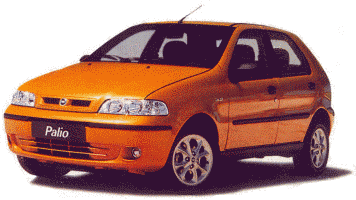 Many of the mechanical parts are also featured on other cars and it is often possible to find parts from the Punto, Uno etc which can be used on the Palio.
Many of the mechanical parts are also featured on other cars and it is often possible to find parts from the Punto, Uno etc which can be used on the Palio.
For books on Fiats, see our Online Bookstore
There is also a list of all our picture galleries (including museums, motorshows and various events).
Wallpapers/Desktop Backgrounds of numerous Fiats also available to download.
Palio comment form
Your Comments
The 1600cc, 100bhp Palio is the finest machine I've driven in 20 years in its capacity and class! Fabulous acceleration, good handling and sporty dashboard. (John, India)
Driving a Siena 1.4 produced in Turkey for more than 2 years, more than 45.000 kilometers without any problem. Its enormous
baggage capacity collects all my litter! a perfect car for the family. (T, Turkey)
My Siena 1.2 (8v MPI 73bhp) was manufactured in Poland in 2000.
Since then I have driven over 90.000 km without any problems. Engine is not
very strong but quite economical and very reliable (no any oil leaks, no any
problems with start). Good suspension (quite hard, nearly "sport"), really
big trunk - 500 liters. As JCC wrote above it is definitely NEW Fiat. (Tom, Poland)
I have a Siena.My place is Tierra del Fuego in Argentina. The roads are built of stones and compacted soil. The car behavior is like a 4X4.
Snow and Ice is no problem for this extraordinary vehicle. Diesel motorized. 600Km with one charge. Spare parts are very cheap.
It's a nice car. I'm happy because I have Sienna 1600cc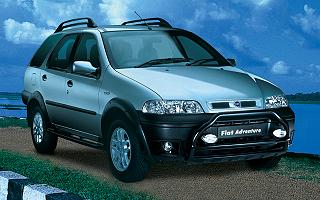 After over two years driving my Palio 99 -1,6SPI-3doors, I should say that I`m quite satisfied with its performance,
driving position and general characteristics. Also, I`d add that here in Argentina, it represented a definite change
from the various Fiat cars previously known, mainly on suspension and level of noise perceived by passengers. Congratulations! (JCC,Argentina)
After over two years driving my Palio 99 -1,6SPI-3doors, I should say that I`m quite satisfied with its performance,
driving position and general characteristics. Also, I`d add that here in Argentina, it represented a definite change
from the various Fiat cars previously known, mainly on suspension and level of noise perceived by passengers. Congratulations! (JCC,Argentina)
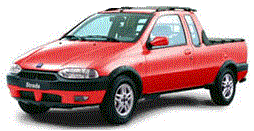
Use the buttons at the top to navigate further, or
Copyright © 2000 to 2008 CarsfromItaly